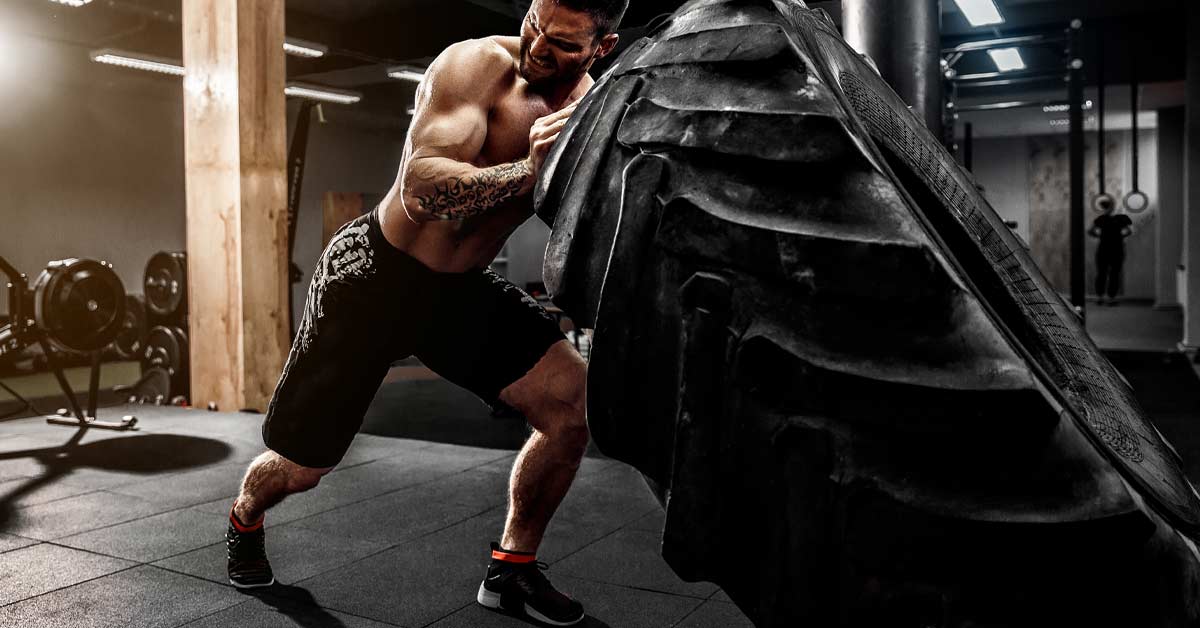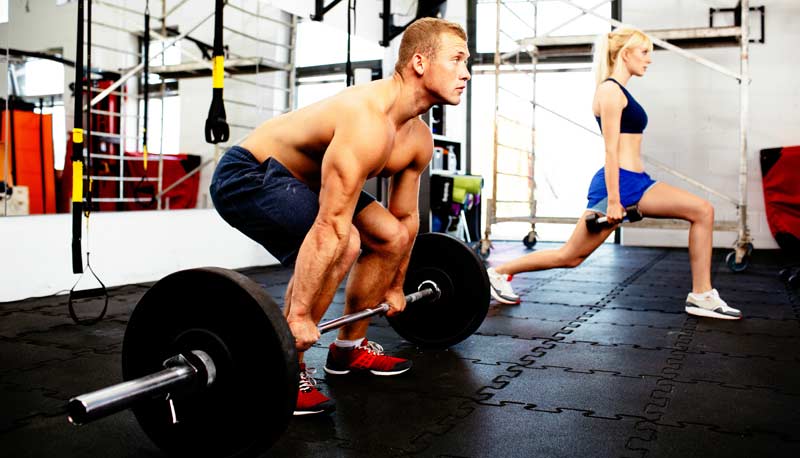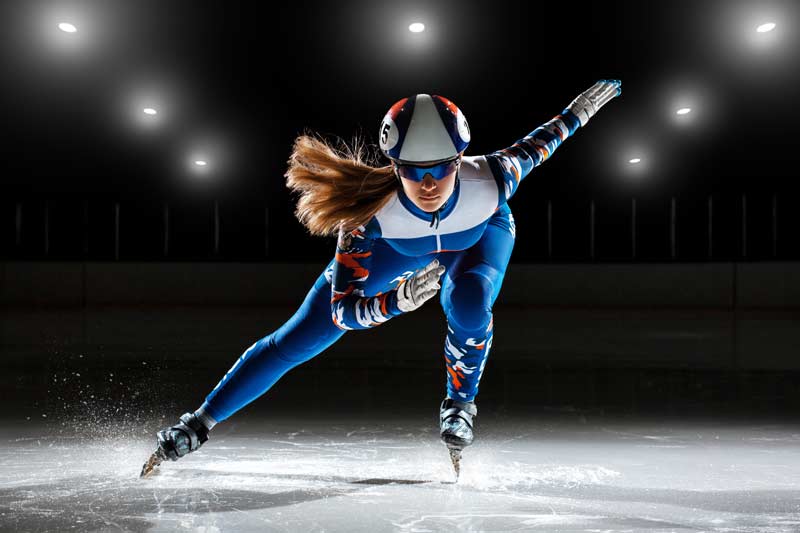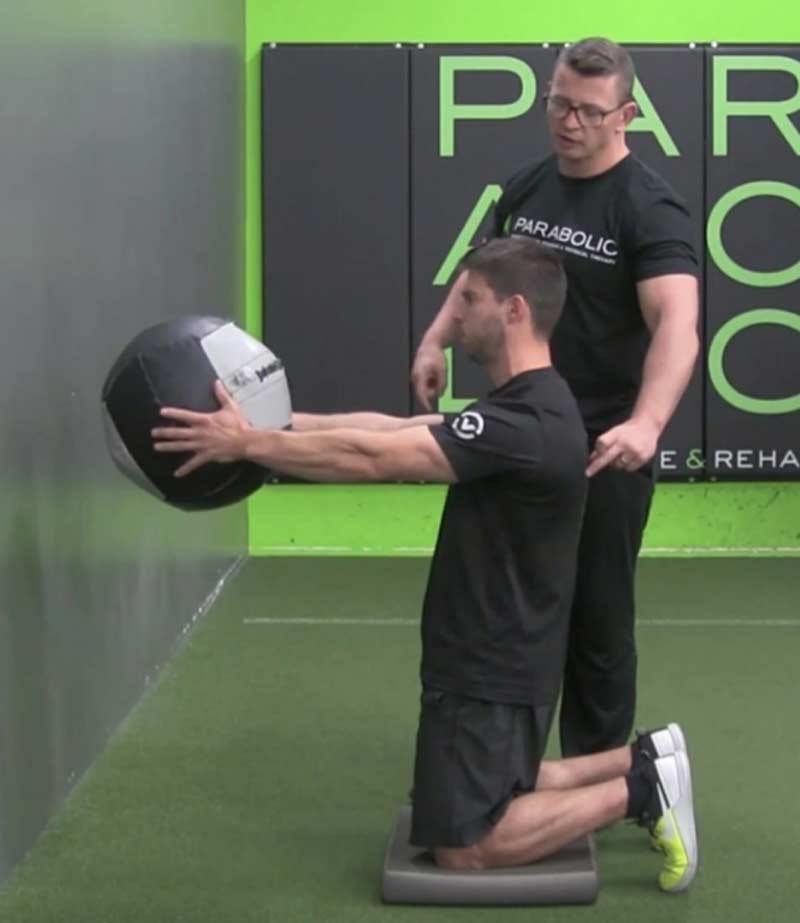[mashshare]
This article relates to fitness, program design, and biomechanical proficiency. The systematic approach given here comes from my best attempt to provide a logical and useful model for coaches to follow. The ultimate problem with this and any other article is that the central ideas will stem from certain starting assumptions that I have in my head. If those starting assumptions are accurate, then the ideas put forth here will probably be very correct; however, if my starting assumptions are off, then things will be inaccurate, and clever people will pick this apart.
The overall purpose of this article is to provide the reader with training movement biomechanics competency checklists. These checklists exist to evaluate how closely the performance of an exercise compares with the archetype for that movement. I will do my best to avoid any semblance of smoke and mirrors, garbage terminology usage (e.g., “activation,” “functional movement,” “muscle balance”), or any other ambiguous approach that many “movement gurus” tend to utilize in their explanations of what constitutes proper movement.
A Trip Down the Yellow Brick Road
One of my favorite stories is The Wizard of Oz. It resonates with me strongly because the audience is led to believe that there is an all-powerful magical being who is in complete control of the great city of Oz. Oz has pomp and panache. Its buildings are large and ornate, its decorations are over the top, and the wizard inside its great tower is great and powerful. When we are inside the palace of the Wizard, and his awe-inspiring appearance is at its zenith, the curtain is pulled back and we see that the whole operation has been nothing but smoke and mirrors. The Wizard is nothing more than a man.
This story is a parable for lessons that we all learn in life. Every institution, every empire, every seemingly invincible juggernaut of an operation is nothing more than a human invention, riddled with human errors. Because of this, my advice is to try to avoid meeting your heroes in life, because they’ll probably disappoint you by not living up to the image of them you had in your mind.
This lesson applies to science, enterprise, technology, and government, to name just a few human-derived systems. When you meet the people at the top, and find out why they do things the way they do and what explanations they have for why things work as they do, you’ll probably realize that the world is held together by nothing more than duct tape and bubble gum.
Even though most things operate as if this world is the Wild West, humans have done amazing things—practically incomprehensible things, when you really think about it—and every now and then the person at the top of the food chain seems to truly live the embodiment of their message. There is something about us as humans that drives us to want to believe in things, including the belief that some of us have thought of perfect ideas. That pursuit of perfection and reaching towards the ideal of a concept or expression drives many of us to be the best versions of ourselves.
I argue that our ability to believe in an ideology, and strive towards seeing visions through, is the greatest of all humanity’s gifts, and the primary ingredient that distinguishes us from the other animals on the planet. In all endeavors, we continue to try to approach the ideal way for that domain to function. If you are reading this article, it is highly likely that you can connect to this concept as it applies to exercise and sport science.
Solving the Kinetics Puzzle with Programming
The kinetics side of the biomechanics puzzle is the easy side. We can measure forces, loads, velocities, and durations of movement easily and precisely. The kinematics component of biomechanics is the descriptive element. With kinematics, we describe the shape the body assumes, the types of movement it makes, and the direction it moves in. The problem with kinematics is that there are far less objective measures.
Measuring how much an organism, or a joint of the organism, moves in the sagittal plane versus the frontal plane versus the transverse plane is a much harder task, and is riddled with ambiguity. In regard to sport performance and execution of movements in a training environment, kinematics is critically important, as proper technique, good movement, and optimal positioning are the foundation of everything, in many ways. The gray areas of what constitutes the windows of things, like “quality movement,” “excellent form,” and “great technique” bother me, and I want to try to hang some objective markers on these things so that coaches have a systematic ability to determine if a movement was done properly.
The primary system that controls our movement expression is the nervous system. The central nervous system (CNS) consists of the brain and spinal cord. At the top of the CNS resides the cortex, which is the most modern component, capable of exerting control over seemingly every subsystem of the CNS. Within the cortex are the sensory and motor divisions.
The premise we start from here regarding biomechanics is that movement is a neural process, and the cortex is the king of the nervous system and equally a sensory and motor system. Based on this starting assumption, I contend that a key feature of determining biomechanics proficiency is considering sensory and motor components when grading movement. In essence, people need to feel certain things that are the “right” things to feel in order to come as close as possible to the archetype for that particular movement. If a movement looks good to you, but the individual performing the motion feels things that do not correspond to the proper execution of that movement, then there is a biomechanical mismatch, and optimal movement is not being displayed.
If movement looks good but an athlete doesn’t feel the right things there is biomechanical mismatch. Share on XIn this systematic approach, I provide you with motor competencies for major movements, and sensory competencies as well. The motor competencies are the visual observational assessment coming from the coach. The coach looks for the proper alignment of certain bony structures, as well as joints, that are specific to certain movements. The sensory competencies are what the athlete says they feel/felt from the movement.
I should state here that when athletes execute movements with either enormous loading or the highest possible velocities, the sensory component will be much less prominent, or impossible to identify. The slower and lighter the movement, the greater the possibility for the participant to observe and report the sensory component.
In this article, I cover the motor competencies first, and then I talk about the sensory competencies afterwards. First, let’s try to go through some fundamental premises that can serve as overarching guideposts.
An important driving premise that governs motor competencies with biomechanics is the zero-sum phenomenon. When viewing the skeleton in the sagittal plane on the posterior side, we see alternating lordotic and kyphotic curves:
- The occiput bows out in a kyphotic curve.
- The cervical spine is lordotic.
- The thoracic spine is kyphotic.
- The lumbar spine is lordotic.
- The sacrum and glutes are kyphotic.
- The glute/ham tie-in is lordotic.
- The hamstrings are kyphotic.
- The popliteal space is lordotic.
- The calves are kyphotic.
- The Achilles is lordotic.
- The calcaneus is kyphotic.
- The arch of the foot is lordotic.
- The ball of the foot is kyphotic.
- The proximal toe is lordotic.
- The distal toe is kyphotic.
This allows for the demonstration of sagittal centering. Sagittal centering is critical for a bipedal animal to be able to erect itself and remain upright with the greatest amount of ease during the forward propulsion of locomotion. When thinking about centering, the easiest way to envision the concept is to look strictly at the axial skeleton. You are looking for the middle of the skull to be positioned directly over the middle of the pelvic floor when examining someone from a profile viewing perspective. If you see someone with a skull projected out in front of their pelvic floor, this person has lost sagittal centering.
There is tremendous debate in the worlds of fitness development and strength sports regarding deadlifting with a round back. This debate seems unable to come to any point of agreement because people are missing the most important underlying concept of centering. If the skull is in line with the pelvic floor, then seeing rounding in the upper back is great, because the person is displaying the natural human condition of kyphosis in the thoracic spine. If you see a rounded back, but the head is way in front of the pelvic floor, this is not a good situation.
In the rounded back deadlift debate, people are missing the most important centering concept. Share on XThe great powerlifter Konstantin Konstantinovs is a great point of reference for sagittal centering with a kyphotic thoracic spine. He doesn’t lift with a dangerous position because there is alignment of the cranium over the pelvis.
In this image of a rounded back deadlift, we see that the individual has a hyperextended neck, which makes the middle of the skull go up/backwards, and directs the pelvic floor down/forward. There is essentially no unity with the orientation/direction of the two ends of the axial skeleton; thus, no centering from a sagittal perspective.

The concept of the zero-sum phenomenon and centering is also a frontal plane phenomenon, and one that very few coaches are aware of. When viewing our skeleton from a frontal plane perspective, we need alternating adduction and abduction at all the major bony regions on one side of our body to keep our center of mass inside our base of support from a side-to-side standpoint. If I examine someone standing at rest, with the majority of weight on their right foot and their axial skeleton shifted in space so that it is directly above their right foot in this resting stance position, I should see the following:
- The right calcaneus is supinating (which is essentially abduction).
- The right femur is adducting.
- The ramus of the ischium is abducting.
- The iliac crest is adducting.
- The right half of the thorax is abducting.
- The right humerus is adducting.
The notion of the right thorax abducting is an odd concept for many to think about. If you are standing primarily on your right foot, and your axial skeleton shifts so that it is centered over your right foot, your center of mass would be at approximately L5, S1. The right side of your thorax (picture your right nipple) would be moving away from that midline (midline is a plumb line going vertical through L5, S1, and your right nipple is moving away from it). The left thorax is moving towards that plumb line going through L5, S1. If you want to see what this looks like, look at the statue of David.

At the most simplistic level of movement, all particles in the universe need to have a concentration gradient—an arrangement of something being uphill compared to something else being downhill—for movement to occur. The cells of our body take advantage of this principle by creating membranes. Membranes separate regions of a cell from one another, and often act as a screen through which particles have to move. It is common for cells to segregate ions, such as sodium, in a high concentration state on one side of a membrane, and then take advantage of the tendency of that ion to move down its concentration gradient to power a cellular behavior. Biology is built on the microcosm being the model upon which the macrocosm copies in a more complex way.
From a macro perspective, the human body takes advantage of a similar sort of concentration gradient with frontal plane behavior. If the mass of the axial skeleton can be sequestered to one side of the base of support and raise the center of mass on that side, then the stage is set to be able to drop center of mass and shift to the other side. This notion of raising and dropping center of mass and shifting the axial skeleton back and forth in a side-to-side manner is at the heart of pendular bipedal walking and the spring mass model of human running locomotion.
In the statue, David has raised his center of mass on the right side of his axial skeleton (his right pelvic floor is higher than the left, and the top of his right neck is higher than the left), and he has shifted his mass over his right foot. David would be able to almost effortlessly propel himself forward and to his left side from this leveraged position. There are times in sport where we see frontal plane centering demonstrated to near perfection. The following image of an Olympic speed skater shows the concept about as well as anything possibly could.

The transverse plane is built on the motions of internal and external rotation, along with horizontal abduction and adduction. For the body to be able to rotate optimally, the foundational planes of sagittal and frontal must be in place. When rotational athletes are centered in the sagittal and frontal planes, spin can occur with the least amount of resistance, and with the most optimal range of motion. When baseball pitchers cannot center in the sagittal and frontal planes, they tend to fall off towards the first base or third base foul lines on the follow-through of their pitch.
The image of the speed skater above is incredibly educational for this concept. The skater is centered, and is able to display rotation of the rib cage and optimal horizontal abduction and adduction of the humerus. Transverse plane movements in sports are incredibly diverse; however, it seems as though most athletes need to be able to load into each hip in the transverse plane, and then come out of that hip in an explosive manner. This is essentially the concept behind power in a baseball swing, a golf swing, a hockey slap shot, throwing, punching, and kicking. When athletes attempt to come out of their hip in the concentric component of these explosive activities, there is a need for dissociation between the pelvis and thorax.
Typically, the pelvis needs to initiate the concentric activity, while the thorax lags from a timing perspective. This separation between pelvis and thorax is the most critical element of transverse plane athleticism. This capability is built upon sagittal and frontal centering, and the ability to shift the axial skeleton side to side over each base of support in the frontal plane. When athletes are capable of centering and shifting, they tend to be able to dissociate joints from one another in the transverse plane.
This dissociation is really the key to optimal kinematic capabilities in striking and running sports. The pelvis should be able to rotate to the left as the thorax rotates right and the neck rotates left. The appendicular skeleton should be able to horizontally abduct and adduct, and internally and externally rotate through full range. The appendicular skeleton should also feature the same mirror asymmetry as I talked about in the frontal plane section.
When watching a great major league pitcher deliver a baseball to home plate, during the cocking phase you should see the arm holding the ball flexed at the elbow, externally rotated at the humerus, and supinated at the wrist. The glove-side arm should be extended, internally rotated, and pronated. When the pitcher delivers the ball to the plate, the ball-side arm will extend, internally rotate, and pronate. The glove-side arm will flex, externally rotate, and supinate. This matching asymmetry of the appendicular skeleton will not occur optimally unless the axial skeleton is centered in the sagittal and frontal planes.
Applying the Biomechanical Plane Concepts in Coaching
Now that we have covered these critical principles, I would like to lay out the motor competencies of the planes. In the first article of this two-part series, I discussed kinematics as having three stances associated with sports and training actions: bilateral symmetrical, asymmetrical front/back, and asymmetrical lateral. If you understand the motor competencies of the planes, the same concepts apply to all stances.
The brain stores the memory of movement itself, and that memory is a constant. Some call this memory an engram. This memory will unfold in an appropriate manner to fit the environmental context in which an athlete is presently involved. If someone understands the motor competencies of the frontal plane, they can unfold the memory in any stance or situation.
If you understand the frontal plane’s motor competencies you can unfold the memory in any situation. Share on XBaseball shortstops do not need to practice every derivation of turning a double play to know how to perform each version in a game. Such a feat is impossible. If the player has the fundamental memory of catch, pivot, and throw, they can unfold the pattern appropriately for the specifics of the circumstances they find themselves in with a particular play. So, let’s start with the sagittal plane.
- Axial skeleton is centered from a profile view.
- Skull is over the middle of the pelvic floor.
- Pelvis is under the middle of the thorax.
- Athlete is capable of retracting the rib cage without the skull going forward of the pelvis.
- Athlete is capable of retracting the rib cage without the pelvis tipping into anterior tilt or migrating backwards of the cranium.

Let’s move on to the motor competencies of the frontal plane.
- Axial skeleton is capable of centering over each foot.
- Pelvis on stance-foot side ascends.
- Rib cage on stance-foot side descends.
- Superior part of pelvis on stance-foot side adducts.
- Thorax on stance-foot side abducts.
- Pelvis opposite stance-foot side descends.
- Rib cage opposite stance-foot side ascends.
- Superior part of pelvis opposite stance-foot side abducts.
- Thorax opposite stance-foot side adducts.
- Stance-side foot supinates.
- Stance-side femur adducts.
- Foot opposite stance-side pronates.
- Femur opposite stance-side abducts.
Finally, let’s cover the motor competencies of the transverse plane.
- Axial skeleton retains frontal and sagittal centering.
- Neck, thorax, and pelvis can rotate both left and right.
- Neck is capable of rotating in any direction as thorax and pelvis rotate in any direction.
- Thorax can rotate left as pelvis rotates right, and vice versa.
- Each humerus can horizontally abduct and adduct.
- Each humerus can internally and externally rotate.
- Each femur can horizontally abduct and adduct.
- Each femur can internally and externally rotate.
- Mirror asymmetry can present itself during striking, throwing, or locomotion movements.
- All structures are capable of dissociating from each other.
It is now time to shift gears and discuss the sensory competencies part of the puzzle. This is likely the most contentious part of this article series, as I’m essentially saying that you should feel certain things, and that it’s probably bad if you feel other things. It’s going to be really hard to dig up peer-reviewed evidence for these statements.
I can envision potential methods for testing this stuff out in a laboratory, but I do not believe anyone has ever done what I envision needs to be done to accurately test these concepts. I welcome contact from researchers who would be interested in measuring these concepts with laboratory equipment, because I would like to discuss what would need to be done in order to get it right.
Great athletes are sensory creatures and can tell you right away when they’re really feeling it. Share on XPrior to diving straight into this material, I would say that “feel” is a critical part of sports. Great shooters in basketball need their shot to feel a certain way. Quarterbacks and pitchers want the ball to feel a specific way in their hand. Lifters know when they may have a PR-type day because the bar feels light. Great athletes are sensory creatures, and they can tell you right away when they’re really feeling it on a certain day. I’m also going to do my best to talk about the major muscles and bony segments that will cover the big hitters of sagittal, frontal, and transverse command of the body. These are fairly inarguable in terms of contributing to those directions from a movement perspective.
The Sagittal Plane
When discussing the sagittal plane, it is my contention that the sagittal plane is your anti-gravity plane. There are certain muscles of the body that allow you to become upright, and prevent you from falling on your face or back. In terms of holding the pelvis and thorax up against gravity, I contend that the hamstrings and abdominals are the best-suited muscle groups for the task. This is not to say that glutes do not participate in this, but glutes are power players in other planes. The glute max is the most important transverse plane muscle of the pelvis, and the glute med is a frontal plane conductor.
Hamstrings, and in particular the internal obliques, are the critical sagittal plane muscles for the axial skeleton. (Spinal erectors, rectus femoris, biceps, and triceps are critical, but for the ease of understanding the model, let’s not go there today.) If you try to prevent yourself from falling on your face, you need a muscle in the back to make sure this doesn’t happen, and if you try to prevent yourself from falling on your back, you need a muscle in the front to make sure this doesn’t happen.
When hamstrings act on the posterior side of the thorax and abs act on the anterior side of the thorax, we are able to hold ourselves upright in a centered state in the sagittal plane. The pelvis does not tip forward when hamstrings are holding onto the ischial tuberosity, and the thorax does not unhinge and fall backwards when abdominals are holding the ribcage and the ilium together on the front. So, when coaching individuals on being competent in the sagittal plane, I’m always looking to hear back from them that they feel their hamstrings and abs engaged in those activities.
When athletes do not feel their hamstrings engage, the center of mass is typically too far forward, and the weight is on the toes. To correct this, you have to encourage the athlete to find and feel the heels. When athletes do not feel abs engaging in exercises, the rib cage is typically elevated and flared forward.
Being able to retract and depress the rib cage without sending the head forward in space is typically the key to correcting this. Reaching the arms forward will typically accomplish the task with thorax positioning. Arms forward and weight on heels usually makes sagittal plane exercises look better, and this is why every coach in the world loves the goblet squat so much.
Sensory competencies in the sagittal plane are:
- Feel weight on their heels.
- Feel hamstrings engage.
- Feel abs engage.
Sensory incompetencies in the sagittal plane (usually due to the center of mass being too far forward) are:
- Weight on toes.
- Feels knees.
- Feels back.
- Feels neck.
Your ability to move well in any plane involves all of the planes working together. Planes are probably a lot like energy systems, where they’re all working together at the same time to some degree, just in different ratios based on task and context. The ability of a person to feel appropriate frontal plane sensory targets is usually strongly tied to possessing sagittal competency, and when they do not feel the right things, I spend most of my time working on the sagittal components of the person’s positioning.
Your ability to move well in any plane involves all of the planes working together. Share on XThe Frontal Plane
Frontal plane competency is largely a muscular phenomenon, but feeling the right part of each foot is also critical. Generally, you want to be on the heel of the stance-side foot and the medial arch of the other foot. Going upwards from there, you want to feel the adductors of the stance-side foot, the glute med of the opposite side, the frontal plane abs on the stance side, and the serratus anterior on the opposite side. Essentially, the competencies zig and zag across the body as we go up each segment.
Sensory competencies in the frontal plane are:
- Stance-side heel.
- Opposite-side medial arch.
- Stance-side adductor.
- Opposite-side glute med.
- Stance-side abs.
- Opposite-side serratus.
Sensory incompetencies in the frontal plane (probably lacking sagittal competencies or frontal centering) are:
- Lats firing up.
- Tensor fascia latae firing up.
- Neck muscles (SCM and/or scalenes) firing up.
- The person gripping with their hands and feet.
- The person not breathing.
The Transverse Plane
Finally, we come to the transverse plane. The ability to rotate is a critical capability for sports that require locomotion, striking, and throwing components. The axial skeleton is really the powerhouse of rotational drive. The glute max is the dominant transverse plane muscle of the pelvis. It rotates the pelvis in the contralateral direction from the stance-side foot during late-stance mechanics in the gait cycle. The ability of the glute max to maximize late-stance actions is tied to finishing the stride through the flexion moment of the great toe.
The ability to rotate is critical for sports that require locomotion, striking, and throwing. Share on XDuring gait, a dissociation-based twist needs to occur between the pelvis and thorax. The rib cage needs to be able to rotate to the right when the right foot initially hits the ground in early stance, while the pelvis orients left. Sensing the ability of the rib cage to rotate in space is the other big axial skeleton piece involved with the transverse plane. The swinging of the arms causes the rotation of the rib cage, and in the previous example of the rib cage turning right while the pelvis turns left as the right foot lands on heel in early stance, we would see the left arm flexed, externally rotated, and supinated, while the right arm is extended, internally rotated, and pronated.
A similar mirror asymmetry concept would be present at the lower extremity, and we could say that the swinging of the legs drives the rotational movement of the pelvis. When the right foot hits the ground at early stance, the right lower extremity is flexed, abducted, externally rotated, and supinated, while the left lower extremity is extended, adducted, internally rotated, and pronated. The sensory competencies of the transverse plane are slightly more rooted in the skeleton as compared to the other planes. The glute max is the major muscle you want to feel, but other than that, you truly want to be aware of the first ray of the foot and the great toe, arm swing, and rib cage.
Sensory competencies of the transverse plane are:
- First ray of foot and great toe.
- Glute max.
- Arm swing (front-side mechanics).
- Rotation of the rib cage.
Sensory incompetencies of the transverse plane are:
- Outside of foot.
- Lumbar spine.
- Neck.
Many people reading this two-part series may be saying, “there’s no place like home, there’s no place like home,” as exposure to new models almost always causes immediate disgust, dismissal, and the desire to return to what you were doing before.
Final Thoughts on Program Design and Coaching
Most readers will probably don their ruby coaching slippers and go right back home after reading this article, and that’s fine with me. Too many people cower in their self-dug holes of “that’s the way we’ve always done it” or “my way’s working so why change it.” Others of you will probably see the potential importance of this system.
I don’t know whether any coaches are ready for this system, but I’m creating it for posterity. Share on XI don’t know if anybody in the coaching world is really ready for this system. In a lot of ways, I’m writing this article and creating this system for posterity. As this stuff trickles out into the world little by little, and more coaches put little pieces of it together, it’ll slowly spread. In maybe five years, there will be people out there integrating the whole model into everything they do.
Therefore, I hope you got really excited, or really revolted, by this two-part series that attempted to pull the curtain back on the magic of the movement gurus, and create a sprawling, binary-objective, biomechanics-based system. For now, our trip through Oz is done. I hope you liked your exposure to color television, but now you’ll need to click your heels together three times and go back to black-and-white Kansas.
Since you’re here…
…we have a small favor to ask. More people are reading SimpliFaster than ever, and each week we bring you compelling content from coaches, sport scientists, and physiotherapists who are devoted to building better athletes. Please take a moment to share the articles on social media, engage the authors with questions and comments below, and link to articles when appropriate if you have a blog or participate on forums of related topics. — SF
[mashshare]




